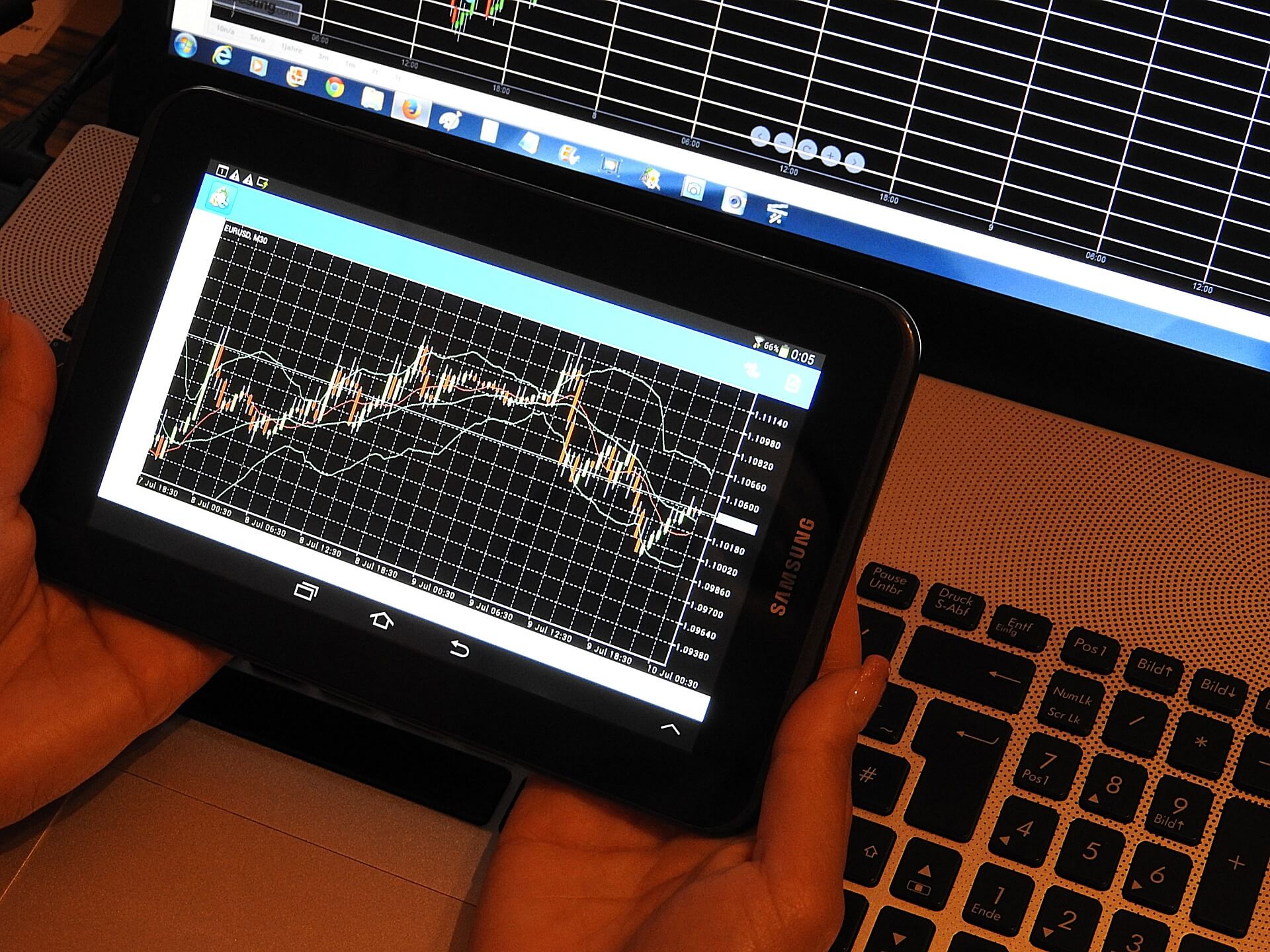Featured
Delving into systems trading in futures
The humble beginnings of futures trading came from farmers, merchants, and the barter system.

Futures trading actually began in the 1800s with a simple need for farmers and merchants to be able to exchange or barter products. They saw the need to ensure prices into the future which began the futures trading as we know it. Since then, trading has gone through scrutiny over trading advantages of market participants, thus creating the need for online trading.
Globex was first introduced in the 1990s to create a venue for individual investors. Globally, one could trade through a central computer. The liquidity expanded and has continued through today. Each trade was a computer match within a host computer.
In 1997, the E-Mini S&P 500 was introduced to appeal to smaller traders for the lower margin and risk compared to the S&P 500 contract that was about $20,000 margin per contract. The contract value of the E-Mini S&P 500 is about $125,637.50 with a minimum tick (0.25) value of $12.50 or $50.00 per point.
An E-Mini S&P 500 system may have less margin required to run it, but the targets and stops may also reflect the smaller margin. The day-trade margin may be around $500.00 and may be traded the day session where market risk does not extend into the global market risk in the overnight markets. A position trading system may require more margin to endure market swings that may occur during the additional time held.
Systems trading actually began back in 1949 by a Richard Donchian of Futures, Inc. He launched a commodity fund with exact rules to execute the buy/sell orders. Since then, the systems trading has grown through mathematical models and the success of CTAs, banking institutions and brokerages.
With the advent of futures trading came the system developers attempting to garnish an edge in trading thru programmable algorithms and testing. These computer programs usually have filters to signal buy and sell orders automatically executed with a trading platform. The mathematical formulas may typically be technically based.
While the systems may appeal for their impressive trading results, the models are hypothetical. They are based on simulations with back data. The buy and sell orders are virtually simulated trading.
Other points to consider
– The reality of systems trading is that past performance does not guarantee future results. Real-time trading involves margin calls and possible trading results that may impede a trading program from continuing. When running back data, those factors do not exist.
– The simulated fills may show a performance better or worse than real trading results. The profit/loss may be skewed by many factors.
– When entering a system, you can enter during a severe drawdown or when the system may show that it is performing well. The results may change upon entering.
– The developers are typically unrelated to the brokerages that may offer the service. They may not be able to screen all of the vendors or developers to be sure that the system has quantifiable data and testing.
– There may be actual mechanical failures in that an order may be held exchange server or system server. If a server goes down, the order may be canceled.
– The systems must still be monitored by the client. There are typically layers of monitoring from the developer thru to the platform to the brokerage at least. The client must essentially follow the system to be sure that the results are within the parameters of risk/reward.
– Some systems may be over optimized where they are created to show positive hypotheticals but cannot be achieved in live trading.

One factor to regard is that the client must keep an eye on the systems. (Photo by DepostPhotos)
Wealth management entities may incorporate the systems to diversify and create an equity curve. With that in mind, they may monitor a series of systems to spread the risk.
Varied commodities are correlated or may trade inversely with a higher probability such as the US Dollar and Gold. The systems may be practically charted for performance such as the markets themselves.
Each individual must first decide if the investment is right for them. Excess venture capital should only be used and one should view the high-risk investment in terms of worst-case scenario.
Current landscape
– Today’s system trading does allow the individual investor to select their portfolio and make changes as they please. The investor may diversify while engaging in a variety of investment vehicles and simply trade in and out of the selection without the stress of trading the markets themselves. Portfolio management is now the client’s strength in monitoring and selecting the portfolio that works with his/her risk parameters and financial goals. The emotional trading mistakes are taken out of the equation.
– The potential risk of loss should be viewed first and then the cost of the system. Leases can be easier to work with. Many investors in the past may have purchased a system that may be out of sync with the market thus becoming worthless. Plus, you must consider the cost for your breakeven. Breakeven, is what you have paid in before you can make anything back. It includes systems lease or purchase. There is a commission cost for running the program. There may also be data fees from the commodity exchanges. They own the data and no longer provide it free in real time.
– The electronic automated systems allow the client the hand’s free ability to set the selected systems and trade without any broker intervention. The entries, stops, and limits are all routed to the exchanges automatically without human emotion. The discipline necessary to trade no longer becomes necessary as the system follows its set parameters. The consistency in following the set parameters no longer is an issue as a manual trader would have to follow the rules or trading plan.
– The fills are practically instantaneous as they are filled by match once found. The trading itself is on a level playing field. The systems selected may differ in the algorithms, the risk, the sophistication of the developer and the correlations to other markets. This allows the traders to run a variety of systems at one time while it may be impossible to do so manually. The fills on trading manually often do not catch a market move as precisely as a system.
– The beauty of systems trading is that the Client may begin or stop trading systems at their discretion allowing them the ability to select the perfect trading portfolio to suit their goals and risk parameters.
– In the past, trading systems were for sale, but no lease arrangements were available. Often a client may spend a great deal on a methodology or mathematical system that could go out of sync with the current market conditions. This would never allow them to make their break-even with the horrendous cost. Now, the leased systems do not require that chunk of money up front. Clients may pay by the month with the ability to simply change as desired. The Easy Language Programming and building Wizards allow the developer to mix the indicators and filters.
While we may look at systems trading with scrutiny, the volume of trade’s derived from systems may create some curiosity about this method of trading.
The Chicago Mercantile Exchange studies reveal that approximately half of the volume of the commodity contracts may be derived from some sort of algorithmic trading.
The liquidity derived from systems trading contributes to the efficiency of the electronic futures trading.
While systems trading may not be for everyone, it does add appeal thru the significance of the fund managers and commodity trading advisors. After all, trading is zero-sum all game!
—
DISCLAIMER: You should carefully consider whether such trading is suitable for you in light of your circumstances and financial resources. You should read the “risk disclosure” accessed at danielstrading.com. Daniels Trading is not affiliated with nor does it endorse any trading system, newsletter or similar service. Daniels Trading does not guarantee or verify any performance claims made by such systems or services.

-

 Impact Investing1 week ago
Impact Investing1 week agoVernazza Autogru Secures €5M Green Loan to Drive Sustainable Innovation in Heavy Transport
-

 Markets4 days ago
Markets4 days agoRice Market Slips Amid USDA Revisions and Quality Concerns
-

 Business2 weeks ago
Business2 weeks agoLegal Process for Dividing Real Estate Inheritance
-

 Fintech13 hours ago
Fintech13 hours agoJPMorgan’s Data Fees Shake Fintech: PayPal Takes a Hit




![Kevin Harrington - 1.5 Minutes to a Lifetime of Wealth [OTC: RSTN]](https://born2invest.com/wp-content/uploads/2023/12/kevin-harrington-400x240.jpg)
![Kevin Harrington - 1.5 Minutes to a Lifetime of Wealth [OTC: RSTN]](https://born2invest.com/wp-content/uploads/2023/12/kevin-harrington-80x80.jpg)
![RDE, Inc. [ OTC: RSTN ] is set to soar in a perfect storm](https://born2invest.com/wp-content/uploads/2024/02/pexels-burak-the-weekender-187041-400x240.jpg)
![RDE, Inc. [ OTC: RSTN ] is set to soar in a perfect storm](https://born2invest.com/wp-content/uploads/2024/02/pexels-burak-the-weekender-187041-80x80.jpg)

















You must be logged in to post a comment Login